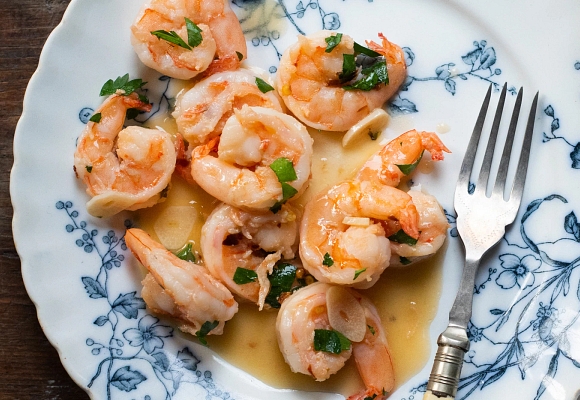Don't have an account?
Click Here- Fast, secure checkout
- Exclusive promotions & offers
- Home
- Sockeye on Pan-Crisped Potatoes & Green Beans

Sockeye on Pan-Crisped Potatoes & Green Beans
Welcome to my Colorado kitchen!
This series features me, Michelle — a writer and soccer mom from the Rocky Mountains — my husband and two kids, some beautiful Vital Choice seafood and lots of regular home cooking.
(Click here to learn more about me, below.)
I want to feature the products and preparations you’re curious about.
Have a suggestion? Question? Recipe you want me to test?
Email me and help to shape this series.
It’s a magical time of year now, when there’s still plenty of summer produce — and cool enough to coexist with kitchen heat!
For this recipe test, I slow-roasted Vital Choice Wild Alaskan Sockeye Salmon to moist and delicate perfection.
To create a tasty foundation for the salmon, I lightly steamed and then pan-crisped small new potatoes, green beans, and shallots.
Looking to infuse more flavors, I added a few briny Kalamata olives to the veggies and topped the salmon with an easy — entirely optional — lemon zest compound butter midway through the roasting.
The new potatoes and shallots invoke memories of breakfast potatoes and onions, so this dish would make a lovely, satisfying, colorful brunch.
A few notes for the cook
Despite its abundant fat, sockeye is prone to overcooking.
Pan- frying and grilling cook it very quickly and require checking the fish frequently.
Poaching is the safest, most forgiving method for sockeye salmon, but slow-roasting comes in a close second.
Slow roasting provides an effortless way to cook sockeye salmon through, while keeping it moist and tender.
By roasting sockeye at just 275ºF, you have a bit more wiggle room on cook time, and the lemony butter topping will slowly melt over the fish without burning.
By steaming the vegetables before you pan-crisp them in olive oil, you’ll release their bright colors (and certain nutrients) and preserve their texture while shortening their roasting time to match the salmon’s.
Feel free to tinker with the butter by adding complementary herbs or spices — flavors like parsley, thyme, sage, garlic, or (a touch of) oregano would fit this recipe well.
Just take a little softened butter, stir in your flavorings and refrigerate until the fish is halfway done.
Midway through the slow roasting, add a dab to each portion. It’s such a simple way to add a little last-minute flavor!
My rating: 4 out of 4 stars
Sockeye on Pan-Crisped Potatoes & Green Beans
Ingredients
- 2 Vital Choice wild sockeye salmon fillets (6 ounces each), thawed
- 1 to 2 tablespoons Vital Choice organic extra-virgin olive oil
- ¾ pound small new potatoes, quartered into wedges
- ½ pound fresh green beans, trimmed
- Salt and pepper to taste
- 1 tablespoon butter, softened
- Zest of ½ lemon
- 1 large shallot, thinly sliced
- ½ cup pitted Kalamata olives, halved
Instructions
- Preheat the oven to 275ºF and position the oven rack in the top third of the oven. Line a baking sheet with parchment paper.
- Bring an inch of water to boil in a large saucepan fitted with a steamer basket. Add the green beans and steam for 4 minutes. Remove immediately to a bowl of ice bath to stop the cooking. Once the green beans are cool, drain well, about 2 minutes.
- Add the new potatoes to the steam basket and cook 7 to 10 minutes until just tender; if a sharp knife slides easily in and out, they’re done. Drain well.
- Roast the salmon for 8 minutes, then add ½ tablespoon of the lemon zest compound butter to the top of each portion. Roast an additional 7 to 10 minutes to your preferred level of doneness.
- As the salmon roasts, heat the olive oil over medium-high heat. Add the shallots and new potatoes and sauté, stirring often, until the vegetables are just browned on the edges.
- Add the green beans and olives and cook an additional 3 to 4 minutes, just until the green beans begin to brown a bit. Remove from heat.
- Divide the potato mixture over two plates, season to taste with salt and pepper, then top with salmon portions.













![Shop Premium Alaskan Halibut,[object Object]](https://images.contentstack.io/v3/assets/blta522552136812831/blt3560aeee5a40084a/67e5d817beb75353402b9f8c/TopNav-Halibut-FC.jpg?auto=webp)














.png?auto=webp)